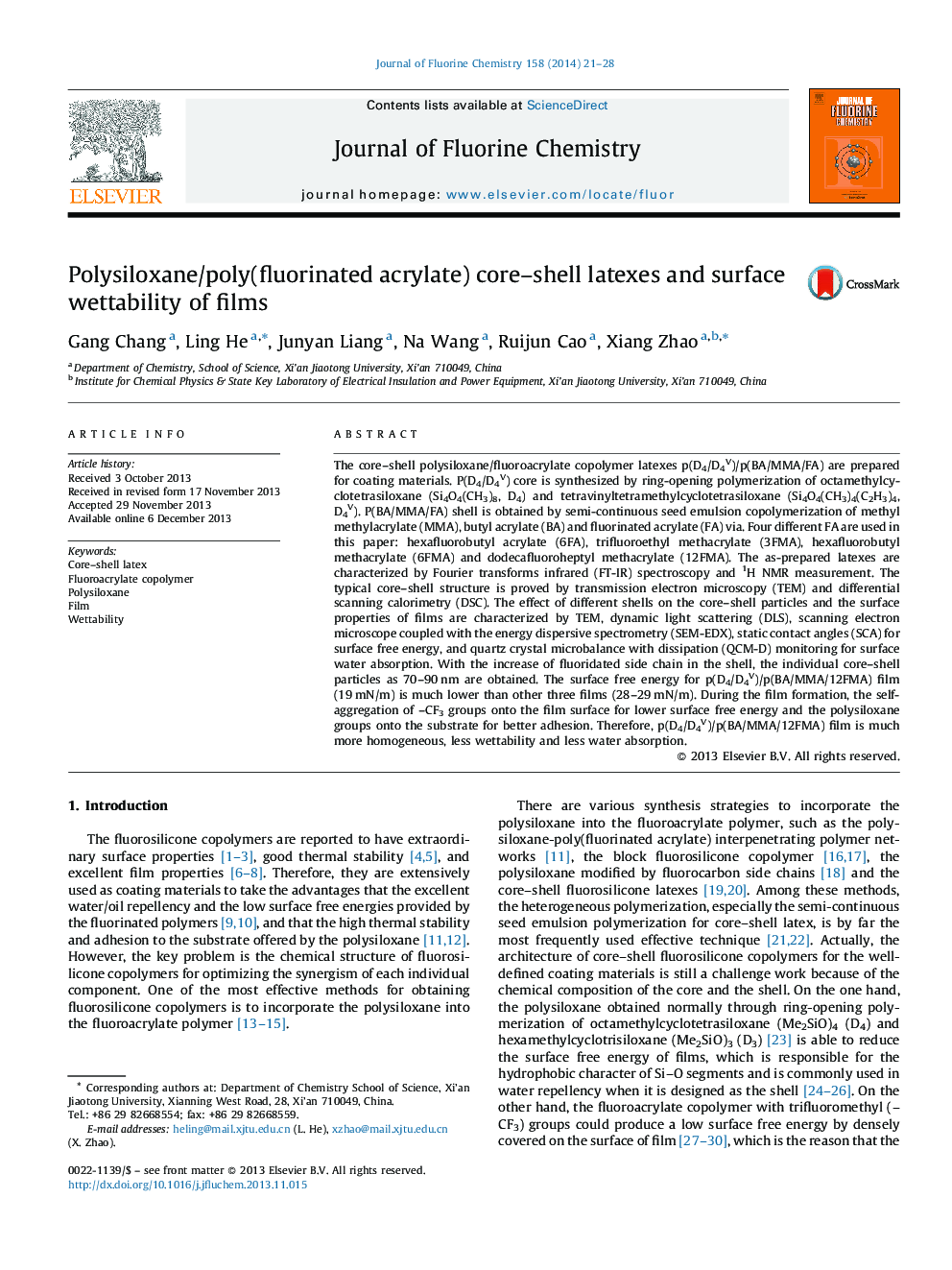| Article ID | Journal | Published Year | Pages | File Type |
|---|---|---|---|---|
| 1314367 | Journal of Fluorine Chemistry | 2014 | 8 Pages |
Highlight•Present a new strategy for fluorosilicone copolymers core–shell latexes.•The effect of 6FA, 3FMA, 6FMA and 12FMA monomers on the latex is investigated.•The longer side chains of 12FMA contribute much to the lower surface free energy.•P(D4/D4V)/p(BA/MMA/12FMA) latex gives a lower wettability and water absorption film.
The core–shell polysiloxane/fluoroacrylate copolymer latexes p(D4/D4V)/p(BA/MMA/FA) are prepared for coating materials. P(D4/D4V) core is synthesized by ring-opening polymerization of octamethylcyclotetrasiloxane (Si4O4(CH3)8, D4) and tetravinyltetramethylcyclotetrasiloxane (Si4O4(CH3)4(C2H3)4, D4V). P(BA/MMA/FA) shell is obtained by semi-continuous seed emulsion copolymerization of methyl methylacrylate (MMA), butyl acrylate (BA) and fluorinated acrylate (FA) via. Four different FA are used in this paper: hexafluorobutyl acrylate (6FA), trifluoroethyl methacrylate (3FMA), hexafluorobutyl methacrylate (6FMA) and dodecafluoroheptyl methacrylate (12FMA). The as-prepared latexes are characterized by Fourier transforms infrared (FT-IR) spectroscopy and 1H NMR measurement. The typical core–shell structure is proved by transmission electron microscopy (TEM) and differential scanning calorimetry (DSC). The effect of different shells on the core–shell particles and the surface properties of films are characterized by TEM, dynamic light scattering (DLS), scanning electron microscope coupled with the energy dispersive spectrometry (SEM-EDX), static contact angles (SCA) for surface free energy, and quartz crystal microbalance with dissipation (QCM-D) monitoring for surface water absorption. With the increase of fluoridated side chain in the shell, the individual core–shell particles as 70–90 nm are obtained. The surface free energy for p(D4/D4V)/p(BA/MMA/12FMA) film (19 mN/m) is much lower than other three films (28–29 mN/m). During the film formation, the self-aggregation of CF3 groups onto the film surface for lower surface free energy and the polysiloxane groups onto the substrate for better adhesion. Therefore, p(D4/D4V)/p(BA/MMA/12FMA) film is much more homogeneous, less wettability and less water absorption.
Graphical abstractFigure optionsDownload full-size imageDownload as PowerPoint slide
